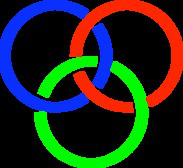Orateur
Dr
Mario Gattobigio
(INLN, Nice-Sophia-Antipolis, France)
Description
The helium-atom clusters have been the object of intense investigation both from a theoretical and experimental point of view. The interaction between helium atoms is such that the 4He molecule is one of the biggest diatomic molecule in nature; in spite of a range interaction of lvdW ≈ 10.2 a.u., thus of a natural energy scale hbar**2 /m lvdW ≈ 400 mK, the binding energy of the molecule is E2 ≈ 1 mK. In addition, also the value of the scattering length a ≈ 190 a.u. isnot natural, being a>> lvdW .
The above properties place helium clusters in the frame of Efimov physics. As shown by
Efimov, when at least two of the two-body subsystems present an infinitely large scattering length an infinite sequence of bound states (Efimov states) appear in the three-body system; their binding energies scale in a geometrical way and accumulate at zero energy. The scaling factor is universal and depends only on the ratio between particle masses, not on the details of the interaction.
When the ratio a/ lvdW is large but finite, the number of Efimov states is finite. For the helium one expects only one Efimov state; indeed, the helium trimer has been produced, and its Efimov-like nature has been established.
The He-He ab-initio potentials show a sharp repulsion below an inter-particle distance of r0 ≈ 5 a.u. This feature makes it difficult quantum mechanical calculations based on basis setssuch as Hyperspherical Harmonics (HH). To overcome this problem, it has been proposed the use of soft-core potentials, with both two- and three-body terms, for the description of few-atoms systems, and it has been used to investigate the 4 He3 [1].
We extend the use of the soft-core potentials to heavier-helium clusters, 4 HeA , with A ≤ 6. We have performed the calculations using HH-expansion method with the technique recently developed by the authors; in our approach the HH basis is used without a previous symmetrization procedure. The aim of the study is twofold: first, we want to clarify the equivalence between hard- and soft-core-potential descriptions; the soft-core parameters are fixed by the two- and three-body low-energy physics, and then used to describe the helium clusters up to six particles. We find good agreement with previous calculations which used hard-core ab-initio potentials. Second, we investigate the Efimov physic in the four-, five-, and six-particle sectors; in agreement with the previous studies, we find two universal four-body states attached to each Efimov state. In addition, we also find two universal five- and six-particle bound states attached to each Efimov state and calculate universal ratio between binding energies.
References
[1] A. Kievsky, E. Garrido, C. Romero-Redondo, and P. Barletta Few-Body Syst (2011), in press
[2] M. Gattobigio, A. Kievsky, M. Viviani, and P. Barletta, Phys. Rev. A 79, 032513 (2009)
[3] M. Gattobigio, A. Kievsky, and M. Viviani, Phys. Rev. C 83, 024001 (2011)
[4] M. Gattobigio, A. Kievsky, and M. Viviani, arXiv:1106.3853v1 [physics.atm-clus] (2011)
Author
Dr
Mario Gattobigio
(INLN, Nice-Sophia-Antipolis, France)
Co-auteurs
Prof.
A. Kievsky
(INFN, Pisa, Italy)
Prof.
M. Viviani
(INFN, Pisa, Italy)

